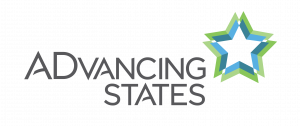Nursing Facility Transitions
LOUISIANA
Identified Problems with the State's Long-Term Care System
- Traditional expectation of only nursing facility care for elderly and disabled persons.
- Lack of information and educational materials for consumers regarding alternatives to nursing facility placement.
- Lack of current information of the housing assistance that is available through HUD or other Public Housing Authorities.
- Providers and institutions lack current educational and media materials for specific training about community alternatives.
- Lack of affordable and accessible housing, services and supports to assist transition into the community.
- Independent Living Centers (ILCs) do not have enough funding to meet the demands for their services to transition people from nursing facilities to the community.
Perceived Strengths
- The state has committed to use person-centered planning for all waiver consumers, using the Personal Outcomes Planning process developed by The Council on Quality and Leadership in Supports and Services for People with Disabilities (The Council). The Council has certified four trainers in Louisiana, who will provide extensive training on person-centered planning to state staff, case managers, and service providers throughout the state.
- ILCs have been successful in moving people from nursing facilities into independent living in the community through the provision of advocacy, information, referral, peer supports, skills training, and supportive living, and as providers of personal care under the state's Personal Care Attendant Waiver.
- The state has joined with the Program of All Inclusive Care for the Elderly (PACE) national association to pilot a PACE Program in New Orleans. This has afforded the state valuable partnerships with consumer, stakeholder, and faith-based organizations working together to provide services through a combination of private funding initiatives.
- The State Legislative Session of 2001 established the formation and direction of a Consumer Task Force comprising elderly persons and individuals with disabilities, the Department of Health and Hospitals (DHH) and other state agencies, advocates and providers to recommend and implement effective and enduring change in community long-term supports systems.
Primary Focus of Grant Activities
- Change perceptions among the general public and health care providers regarding appropriate care choices for the elderly and individuals living with disabilities.
- Establish processes for transition from institutional care to the community.
- Improve quality assurance/monitoring for nursing facility (NF) residents.
Goals, Objectives, and Activities
Overall Goal. Address the identification and transition of NF residents to the community, expanding access to community housing alternatives while overcoming barriers to transition.
Goal. Enhance outreach to the general public informing them of community alternatives by developing media materials and distribution networks.
Objectives/Activities
- A 1–800 help line/complaint line will be accessible statewide for those who transition individuals and for the general public, to provide information related to community supports and services, and for callers to provide input or feedback on adequacy of services.
- Educational materials such as brochures and DHH/Bureau of Community Supports and Services (BCSS) Website updates on home and community-based waiver services will provide outreach to consumers, stakeholders, nursing facilities, providers, associations, and other local and state agencies.
- Videos will be developed to inform the general public and NF residents of community alternatives. Compact portable televisions will be available for video viewing.
Goal. Provide systems change training about community alternatives to medical providers and institutions.
Objectives/Activities
- BCSS trainers will use the "train the trainer" method to provide training to all staff members, transitional team members, and contractor members statewide (nine regions).
- Develop compact discs for the Transition Team staff and ILC partners to use with laptop computers for on-site training purposes.
Goal. Create infrastructure to identify, screen, address barriers, and transition at least 150 appropriate NF residents, and to provide quality assurance/monitoring.
Objectives/Activities
- Develop a client assessment/evaluation process, based on Residential Assessment Instrument - Home Care (RAI-HC), to generate categories of need and guidance as to appropriate options.
- Provide up to $1,500 for individuals who are transitioning into the community who require assistance with deposits and other expenses necessary to set up a household, or who may require other services such as a personal emergency response system.
- Standard quality assurance evaluation process and citizens monitoring process will be developed and applied to individuals transitioned under the grant and to evaluate the success of the program.
Key Activities and Products
- Develop educational materials such as brochures, videos, and compact discs, and update DHH/BCSS Website to inform consumers of options for transition to the community.
- Enhance helpline capabilities to cope with increased requests by adding additional hardware and staff.
- Ensure statewide dissemination of educational materials, broad public contact, training, and contact of individuals in nursing facilities who indicate an interest in returning to the community.
- Transition at least 150 people from nursing facilities.
- Develop and apply quality assurance and citizens monitoring processes for grant activities.
Consumer Partners
The Consumer Task Force and the Disability Supports and Services System Planning Group (DSSSPG) comprises consumers, providers, advocates, and state and local representatives with various expertise.
Consumer Partners and Consumer Involvement in Planning Activities
This grant application builds on previous and present consumer, provider and state partnerships/task force efforts that have identified recommendations to improve community-integrated, long-term care support systems, including the following:
- The state has held several statewide "Stakeholders Meetings" since 2000, comprising a range of consumers from child advocates to adults of all ages with disabilities or chronic illness, have identified barriers to HCBS as well as recommendations to ameliorate the situation.
- The Louisiana Office of Elderly Affairs reported key issues in long-term care and presented a plan to coordinate the complicated mix of services for the state's elderly population in Aging Matters ...Using Our Heads to Create a Continuum of Care for Older Louisianians. This report was developed by a panel of over 75 Task Force members including consumers, providers, advocates, and state and local representatives with various expertise.
- The DSSSPG and the Consumer Task Force, as well as state agencies and private partners, provided input and endorsed the second round rework of the grant application.
Consumer Partners and Consumer Involvement in Implementation Activities
Consumers and their families who are interested in transitioning will be asked to participate in an advisory group for grant activities.
Public Partners
- Two state-operated nursing facilities (Villa Feliciana and New Orleans Home).
- Governor's Office of Elderly Affairs.
- Governor's Office of Disability Affairs.
- State Ombudsman.
Private Partners and Subcontractors
- RESOURCES for Independent Living.
- Southwest Louisiana Independence Center, Inc.
- New Horizons Independent Living Center.
Public and Private Partnership Development/Involvement in the Planning Phase
The DSSSPG and the Consumer Task Force, as well as state agencies and private partners named above, provided input and endorsed the second round rework of the grant application.
Public and Private Partnership Development/Involvement in Implementation
Public Partners
The state-operated nursing facilities noted above will participate in efforts to transition residents into the community.
Private Partners
The ILCs will assist in transitioning persons who leave facilities without the benefit of a HCBS waiver slot by arranging for community services after transition.
Oversight/Advisory Committee
- The Consumer Task Force/DSSSPG will participate in on-going oversight with quarterly reports presented to this group, which includes a workgroup focused on transition issues.
- An advisory group specific to the grant will be established from among consumers interested in transitioning out of a nursing facility and relevant stakeholders.
Formative Learning and Evaluation Activities
- The ongoing feedback from consumers, stake holders, and other partners will be incorporated to provide continuous quality improvement. Evaluation forms are distributed at each training and analysis conducted to identify further modifications needed.
- The training for all Transitional Team members, case managers and providers will be an ongoing process that will be evaluated. Evaluation forms are distributed at each training and analysis utilized to further modify training.
Evidence of Enduring Change/Sustainability
- Ongoing implementation and support of transition efforts will be continued through the DHH/BCSS HCBS Waivers when the grant period ends. Grant funds are primarily being utilized to provide tools to be used in the ongoing process. Although additional staffing will be requested to assist in transition efforts, if not obtained, these functions shall be performed by existing staff.
- The outreach materials (brochure, video,compact disc) developed and the computer equipment purchased with grant funds will remain after the end of the grant.
Geographic Focus
Statewide.

